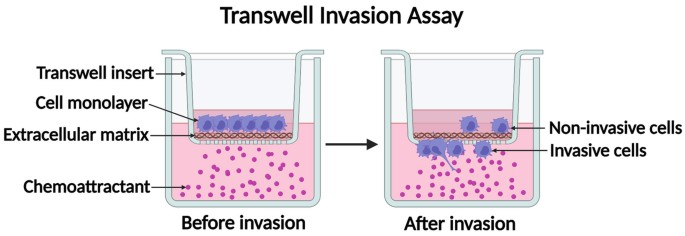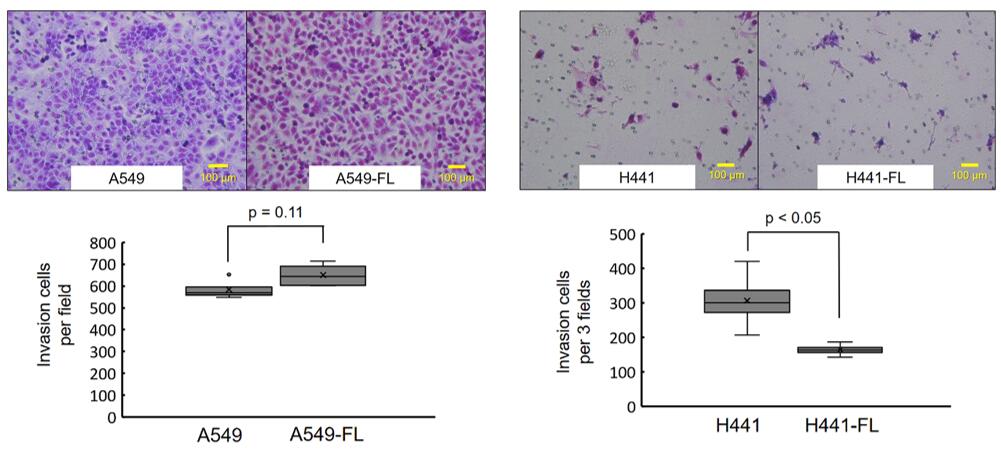The imperative to identify inhibitors of cancer invasion has propelled the evolution of quantitative in vitro invasion assays. The prevailing methodologies are rooted in the classical Boyden assay system, with contemporary adaptations employing commercially accessible plastic inserts for multi-well plates, exemplified by Transwell Permeable Supports.[1] These inserts feature a cell-permeable membrane, fostering precise and reproducible invasion assays.
Upon placement in a multi-well tissue culture plate, these inserts establish a two-chamber system, separated by the cell-permeable membrane. To construct an invasion assay, the membrane pores are occluded with an extracellular matrix gel designed to replicate the physiological matrices encountered by tumor cells during in vivo invasion.
 Figure 1. Schematic diagram of cell transwell invasion assay.[2]
Figure 1. Schematic diagram of cell transwell invasion assay.[2]
Matrigel system is a basement membrane-like matrix that provides a physiological and mimics the in vivo environment. The Transwell Invasion assay involves the use of a Transwell chamber, which consists of an upper and lower compartment separated by a porous membrane. The upper compartment is coated with a layer of Matrigel, creating a barrier that cells need to invade through.
Creative Biarray's transwell Invasion assay using Matrigel System offers an innovative and effective solution for studying cancer cell invasion in vitro.
Study Examples:
 Figure 2. Transwell Matrigel invasion assay.[3]
Figure 2. Transwell Matrigel invasion assay.[3]
References:
1. Marshall, John. "Transwell(®) invasion assays." Methods in molecular biology (Clifton, N.J.) vol. 769 (2011): 97-110. doi:10.1007/978-1-61779-207-6_8
2. Justus, Calvin R et al. "Transwell In Vitro Cell Migration and Invasion Assays." Methods in molecular biology (Clifton, N.J.) vol. 2644 (2023): 349-359. doi:10.1007/978-1-0716-3052-5_22
3. Nakano T, Kanai Y, Amano Y, et al. Establishment of highly metastatic KRAS mutant lung cancer cell sublines in long-term three-dimensional low attachment cultures. PLoS One. 2017;12(8):e0181342. Published 2017 Aug 7. doi:10.1371/journal.pone.0181342
Online Inquiry